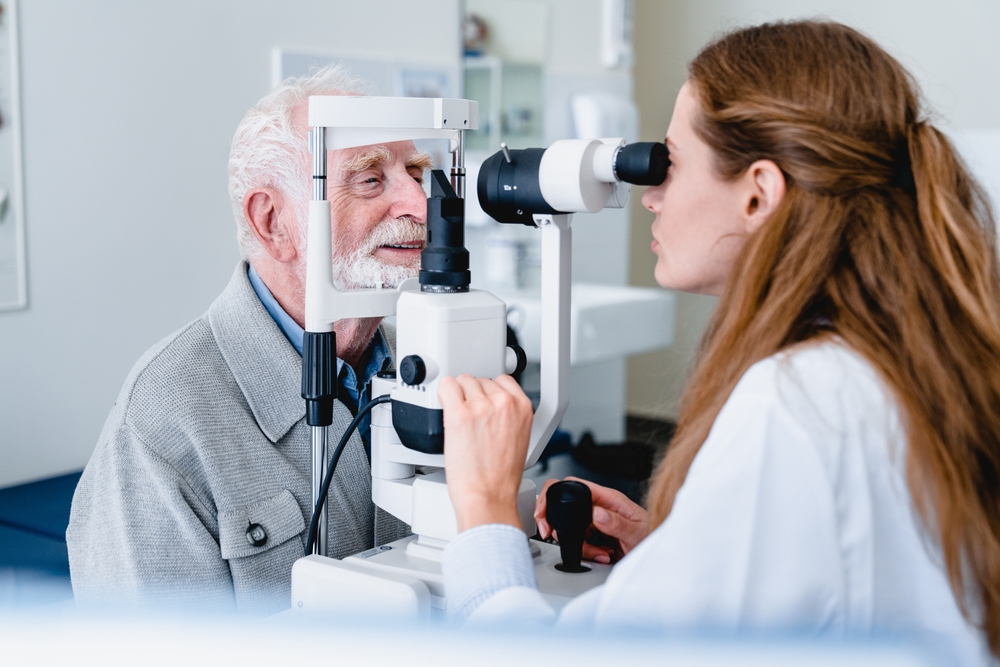How Can High Blood Sugar Affect Your Eyes?
April 18, 2024
If you have diabetes, it can sometimes be difficult to effectively control your blood sugar. Uncontrolled high blood sugar can have a serious impact not only on the health of your body, but also on the health of your eyes.
If you have poorly managed diabetes and high blood sugar levels, you could be at risk for developing a diabetic eye disease. Keep reading to understand how high blood sugar can affect your eyes and cause diabetic eye disease!
What is Diabetic Eye Disease?
Diabetic eye disease is a group of eye conditions that can affect or are more likely to affect people who have diabetes. These conditions include diabetic retinopathy, diabetic macular edema, and glaucoma.
While only one of these conditions is directly caused by high blood sugar, all of them can result in vision impairment due to poorly managed blood sugar levels. Although anyone can develop glaucoma, people with diabetes are far more likely to develop this condition.
Diabetic Retinopathy
Diabetic retinopathy occurs when high blood sugar levels damage the blood vessels in the retina, which is the light-sensitive tissue at the back of the eye. The primary function of the retina is to capture light that enters the eye and convert it into signals that the brain interprets as visual images.
There are two stages of diabetic retinopathy: non-proliferative (NPDR) and proliferative (PDR). In the early, or NPDR, stage of diabetic retinopathy, high blood sugar levels damage the retina's delicate blood vessels, causing them to weaken, bulge, and leak fluid. 
This damage can prevent vital oxygen from reaching the retinal tissue. In the later, or PDR, stage of the condition, the damaged blood vessels die off and are replaced with new, abnormal blood vessels.
These new blood vessels have weak structures and leak blood and other fluids into the vitreous, critically increasing pressure within the eye. Diabetic retinopathy develops slowly, and it may take years for symptoms to become noticeable.
In the NPDR stage, the most common symptoms are blurred vision, the appearance of floaters, difficulty seeing in low light or night blindness, changes in color perception, and near vision impairment. Once the condition has progressed to the PDR stage, a person may experience a worsening of NPDR symptoms and develop more serious symptoms.
These new symptoms include an increase in the appearance of floaters, tunnel vision, incidents of temporary but serious vision impairment, and the sudden, complete loss of central vision. While diabetic retinopathy is a threat to clear vision on its own, the built-up pressure it causes within the eye can cause the onset of other types of diabetic eye diseases.
One of these is diabetic macular edema.
Diabetic Macular Edema
Diabetic macular edema occurs when the fluid leaking from weakened or damaged blood vessels creates pressure that causes the macula to thicken and swell. The macula is a specialized area of the retina that is essential to the ability to see colors and fine details.
T he primary symptom of macular edema is blurry or distorted central vision. Other symptoms include:
he primary symptom of macular edema is blurry or distorted central vision. Other symptoms include:
- Reduced visual acuity
- Dark or empty areas in the central vision
- The distortion of printed words on a page
- Colors that appear faded or washed out
- Difficulties adapting to changes in light intensity
Although macular edema can be caused by other eye conditions, including macular degeneration and certain inflammatory eye diseases, the most common cause is diabetic retinopathy. Once the macula has been affected, it cannot be reversed.
Glaucoma
People with diabetes are also at a much higher risk of developing a type of glaucoma called neovascular glaucoma. It is considered a secondary glaucoma, which is a glaucoma that has been caused by another medical condition.
Glaucoma occurs when a buildup of pressure within the eye damages the optic nerve. The optic nerve plays a critical role in clear vision as it is the primary way visual information is relayed from the eye to the brain.
Glaucoma is often called "the silent thief of sight" because it develops slowly, and symptoms may not appear until the optic nerve has been severely damaged. The signs of glaucoma include gradual loss of peripheral vision, blind spots, and tunnel vision.
How are Diabetic Eye Diseases Treated?
Diabetic eye diseases caused by high blood sugar cannot be cured. The damage they cause to the structures of the eye and the impact that damage has on clear vision is often irreversible.
Treatments for diabetic eye diseases aim to prevent the further progression of these conditions and to limit vision impairment. Recommended treatments vary based on the disease being treated.
Treatments for diabetic retinopathy include better monitoring and management of blood sugar levels, prescription medications that can reduce swelling or prevent the growth of new blood vessels, and laser surgery to seal off leaking blood vessels and reduce swelling in the retina.
Diabetic macular edema is primarily treated with steroids to reduce swelling but may also benefit from treatments that aim to seal off leaking blood vessels in the retina. Treatments for glaucoma focus on easing pressure within the eye and include prescription eye drops, laser therapy, and surgical procedures that attempt to increase drainage of fluid from the eye.
The best way to prevent high blood sugar from affecting your eyes is by carefully controlling your diabetes, as well as by scheduling frequent comprehensive eye exams. Diabetic eye diseases can be avoidable as long as you stay on top of both your diabetes and the health of your eyes!
Do you have diabetes? If you haven't had an annual eye exam recently, schedule an appointment at Advanced Eye Care and Aesthetics in Bel Air, MD, today!



